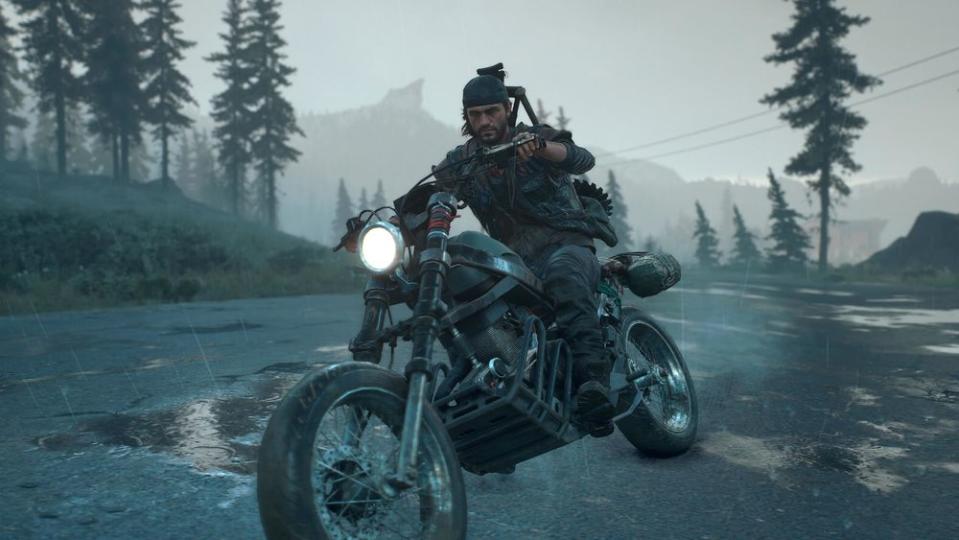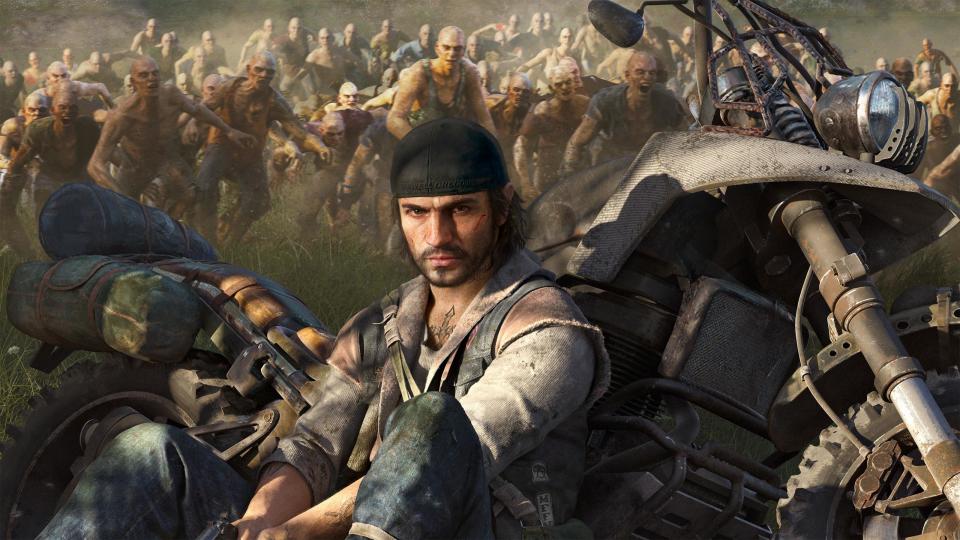Days Gone is an enjoyable ride with a few too many detours: EW review
Imagine a PlayStation-exclusive, story-driven game set in a post-apocalyptic world afflicted by a grisly infection. If you weren’t reading this review right now, Days Gone probably wouldn’t be the game that sprang to mind. Comparing this perfectly adequate open world from Bend Studio to The Last of Us isn’t the fairest side-by-side, but Sony had to know the juxtaposition was a possibility when it greenlit its latest potential franchise starter. Judged on its own merits, Days Gone does enough right to piece together an entertaining ride, but there are a considerable number of bumps in the road, speaking both figuratively and literally.
Metaphorical roadblocks come from the pacing of the game’s character arcs. The story follows Deacon St. John, a tough biker (not Norman Reedus — his PS4 exclusive probably won’t be about a zombie outbreak, but who can say) struggling to find a reason to press on after losing his wife on the worst night of a world-ending viral outbreak. Two years after that incident, Deacon is a jaded survivalist with a certain code of ethics, though what that code entails can be a little hazy beyond easy platitudes like “I don’t kill unarmed women.”
It’s always abundantly clear that Deacon is the good guy, but for a long stretch, it’s never quite as clear what he actually stands for. Just when it seems like Deacon is landing on a reason to live in the game’s second act, a sudden change halts that progress and leads into an unnecessarily fetch-quest padded third act that feels somewhat disjointed from the action that came before.
The same lack of an overarching philosophical direction that makes Deacon challenging to get invested in early on also applies to the game as a whole. As an example, much of the midgame is devoted to building up the moral authority of a character who advocates maintaining peace and giving second chances, but after a certain turn, that worldview goes out the window.
Without spoiling too much about the origin of the Freaker infection or the resolution to Deacon’s personal journey, many of the biggest story beats feel forced in a way that seems designed to wrench emotional impact from characters who haven’t been given quite enough of a chance to earn that kind of clout. Despite solid voice acting from the main cast, the dialogue leaves a few characters who should be vital to Deacon’s emotional progression feeling flat. It often feels like the writers don’t trust players to pick up on their world-building, and time that could be spent developing relationships is devoted instead to reiterating background info.

As for the literal bumps in the road, those belong to Days Gone’s open world. Early game, Deacon’s signature mode of transportation, his motorcycle, is something of a hassle to maintain, barely going a kilometer before running out of gas. Once Deacon has upgraded his bike a few times though, the small-town Oregon landscape is satisfying enough to traverse. Maintaining the bike is a key element of gameplay, and the vehicle is essential for long distance travel, combat strategy and more.
Designing an open environment around a personal means of transport is a good idea for a game of this scope, but the execution of that idea doesn’t always live up to its promise. For starters, the sensitivity of the bike controls doesn’t match up with the density of obstacles. In my playthrough, I probably took more damage from ramming into trees, rocks and abandoned cars than I ever did from Freakers or hostile humans. Also, on the technical side of things, the frame rate and texture load rates tend not to agree with top motorcycle speeds. It might not be as much of an issue on a Pro model, but playing on a standard PS4, bike rides tend to get a little choppy.
One of the game’s other defining features also has a tendency to cause some FPS hiccups. The zombie equivalents in Days Gone, Freakers, come in a variety of shapes, sizes and species, but the most common by far is the Swarmer. Swarmers are infected humans remarkable for their tendency to group together into massive Hordes (not swarms, for some reason). Horde fights are large-scale set-pieces that occur throughout the open world and a few times within the main storyline. Clearing these Hordes can be exhilarating or frustrating, depending on the number of traps and explosives Deacon has on hand, but rendering 200-plus twitchy Freakers is a little much for the baseline PS4 hardware to handle.
Generally, the design choices behind Freakers make them considerably more interesting than run-of-the-mill zombies. Swarmers exhibit animalistic behaviors such as nest building, while the second most common type, Newts, are infected adolescents who congregate on rooftops and only attack when their territory is invaded. Including infected children as a sort of subspecies is a bold, unsettling call, but the moral implications of eradicating them are largely glazed over, save for one character who refers to them as “sick kids” instead of Newts.
In terms of challenge, Freakers are usually pretty inconsequential if they aren’t bunched together, leaving the most dangerous gunfights to the humans, from sadistic cultist fanatics to heavily armed militias. Fights with these enemies play out as cover-based shootouts intercut with serviceable melee combat.
This review probably sounds more negative than it should, because Days Gone does just about everything almost right. Despite its flaws, it is a game that is worth spending the time to finish, and there’s plenty of fun to be had on the open road. It’s nearly a great game in the sense that nothing is outstandingly wrong with it, but almost every aspect — from technical stability to writing to mechanics and level design — could use just one more pass of polish. B
Related content:


